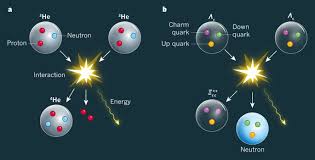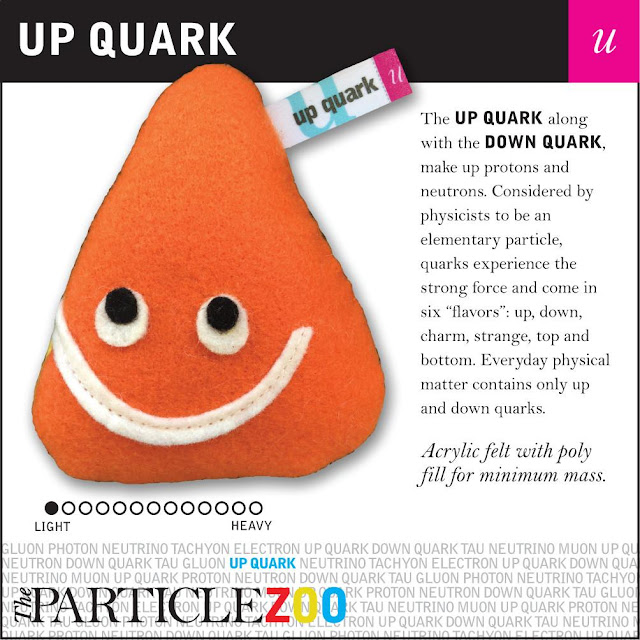What
is Electronics?
The
branch of physics and technology concerned with the design of circuits using
transistors and microchips, and with the behaviour and movement of electrons in
a semiconductor, conductor, vacuum, or gas.
OR
Electronics
comprises the physics, engineering, technology and applications that deal with
the emission, flow and control of electrons in vacuum and matter
Examples: circuits or devices using transistors,
microchips, and other components.
 |
| Electronic |
What
is Electron?
a
stable subatomic particle with a charge of negative electricity, found in all
atoms and acting as the primary carrier of electricity in solids.
OR
The
electron is a subatomic particle, symbol e− or β− ,
whose electric charge is negative one elementary charge. Electrons belong to
the first generation of the lepton particle family, and are generally thought
to be elementary particles because they have no known components or
substructure.
 |
| Electron |
Composition:
Elementary particle
Classification:
Fermion
Interactions:
Gravity, Electromagnetism, Weak interaction
Symbol: β⁻, e⁻
Discoverer: J.
J. Thomson
Discovered:
1897
Mass:
[1822.8884845(14)]⁻¹ u, 5.4857990946(22)×10⁻⁴ u, 9.10938291(40)×10⁻³¹ kg, 0.510998928(11)
MeV/c²
What
is Proton?
a
stable subatomic particle occurring in all atomic nuclei, with a positive
electric charge equal in magnitude to that of an electron.
OR
A
proton is a subatomic particle, symbol p or p⁺ , with a positive electric charge of +1e
elementary charge and a mass slightly less than that of a neutron. Protons and
neutrons, each with masses of approximately one atomic mass unit, are
collectively referred to as "nucleons".
 |
| PROTON |
Composition: 2
up quarks, 1 down quark
Classification:
Fermion
Interactions:
Gravity, Electromagnetism, Weak interaction, Strong interaction
Symbol: N⁺, p⁺, p
Discoverer:
Ernest Rutherford
Mass:
938.272046(21) MeV/c², 1.007276466812(90) u, 1.672621777(74)×10⁻²⁷ kg
Electric
charge: +1 e, 1.602176565(35)×10⁻¹⁹ C
What
is nucleus?
the
central and most important part of an object, movement, or group, forming the
basis for its activity and growth.
PHYSICS
the
positively charged central core of an atom, consisting of protons and neutrons
and containing nearly all its mass.
BIOLOGY
a dense
organelle present in most eukaryotic cells, typically a single rounded
structure bounded by a double membrane, containing the genetic material.
Read more
Read more
 |
| Nucleus |
Q
1):How Many Particle Exists in the Nucleus?
Subatomic
particle, also called elementary particle, any of various self-contained units
of matter or energy that are the fundamental constituents of all matter.
Subatomic
particles include electrons , protons , neutrons , Neutrino ,Positron ,quarks ,
Up quark , Down quark , Strange quark , Pion , hyperons , Charm quark , gluons
, Photons , Meson , J/psi meson And Rho meson
Neutrino:A
neutrino is a subatomic particle that is very similar to an electron, but has
no electrical charge and a very small mass, which might even be zero. Neutrinos
are one of the most abundant particles in the universe.
Or
A
neutrino is a fermion that interacts only via the weak subatomic force and
gravity. The mass of the neutrino is much smaller than that of the other known
elementary particles.
 |
| Neutrino |
Composition:
Elementary particle
Classification:
Fermion
Interactions:
Gravity, Weak interaction
Symbol:
v̅e, ντ, v̅μ, v̅τ, νμ, νe
Discoverer:
Frederick
Reines, Clyde Cowan, Leon M. Lederman, Jack Steinberger, Melvin Schwartz
Mass:
0.320
± 0.081 eV/c² (sum of 3 flavors)
Electric
charge: 0 e
Positron:
The
positron or antielectron is the antiparticle or the antimatter counterpart of
the electron. The positron has an electric charge of +1 e, a spin of 1/2 (same
as electron), and has the same mass as an electron.
Or
The
positron or antielectron is the antiparticle or the antimatter counterpart of
the electron. The positron has an electric charge of +1 e, a spin of 1/2, and
has the same mass as an electron. When a positron collides with an electron,
annihilation occurs.
 |
| Positron |
Electric
charge: +1 e; + 1.602176565(35)×10−19 C
Discovered:
Carl D. Anderson (1932)
Symbol: e+,
β+
Generation:
First
Antiparticle:
Electron
Composition:
Elementary
particle
Interactions:
Gravity, Electromagnetic, Weak
quarks:
A
quark (/kwɔːrk, kwɑːrk/)
is a type of elementary particle and a fundamental constituent of matter.
Quarks combine to form composite particles called hadrons, the most stable of
which are protons and neutrons, the components of atomic nuclei.
A
quark is a type of elementary particle and a fundamental constituent of matter.
Quarks combine to form composite particles called hadrons, the most stable of
which are protons and neutrons, the components of atomic nuclei.
 |
| Quarks |
Composition:
Elementary particle
Classification:
Fermion
Interactions:
Gravity, Electromagnetism, Strong interaction, Weak interaction
Symbol: q
Electric
charge: -1/3 e, +2⁄3 e
Spin: ¹⁄₂
Types: 6
(up, down, strange, charm, bottom, and top)
UP
Quarks:
The
up quark or u quark (symbol: u) is the lightest of all quarks, a type of
elementary particle, and a major constituent of matter. It, along with the down
quark, forms the neutrons (one up quark, two down quarks) and protons (two up
quarks, one down quark) of atomic nuclei.
Or
The
up quark or u quark is the lightest of all quarks, a type of elementary
particle, and a major constituent of matter. It, along with the down quark,
forms the neutrons and protons of atomic nuclei. It is part of the first
generation of matter, has an electric charge of + e and a bare mass of 2.3+0.7
−0.5 MeV/c².
 |
| UP Quarks |
Composition:
Elementary particle
Classification:
Fermion
Interactions:
Gravity,
Electromagnetism, Weak interaction, Strong interaction
Symbol: u
Discovered:
1968
Mass:
2.3[+0.7, -0.5] MeV/c²
Electric
charge: +2⁄3 e
Down
quark:
The
down quark or d quark (symbol: d) is the second-lightest of all quarks, a type
of elementary particle, and a major constituent of matter. Together with the up
quark, it forms the neutrons (one up quark, two down quarks) and protons (two
up quarks, one down quark) of atomic nuclei.
Or
The
down quark or d quark is the second-lightest of all quarks, a type of
elementary particle, and a major constituent of matter. Together with the up
quark, it forms the neutrons and protons of atomic nuclei.
 |
| Down Quarks |
Composition:
Elementary particle
Classification:
Fermion
Interactions:
Gravity,
Electromagnetism, Weak interaction, Strong interaction
Symbol: d
Discovered:
1968
Mass:
4.8[+0.5, -0.3] MeV/c²
Electric
charge: −1⁄3 e
Strange
quark:
Like
all quarks, the strange quark is an elementary fermion with spin 12, and
experiences all four fundamental interactions: gravitation, electromagnetism,
weak interactions, and strong interactions.
OR
The
strange quark or s quark is the third lightest of all quarks, a type of
elementary particle. Strange quarks are found in subatomic particles called
hadrons. Example of hadrons containing strange quarks include kaons, strange D
mesons, Sigma baryons, and other strange particles.
 |
| Strange Quarks |
Composition:
Elementary particle
Classification:
Fermion
Interactions:
Gravity, Electromagnetism, Weak interaction, Strong interaction
Symbol: s
Discovered:
1968
Mass:
95[+5, -5] MeV/c²
Electric
charge: −1⁄3 e
Pion:
a
meson having a mass approximately 270 times that of an electron.
OR
DescriptionIn
particle physics, a pion is any of three subatomic particles: π⁰ , π⁺ , and π− .
Each pion consists of a quark and an antiquark and is therefore a meson. Pions
are the lightest mesons and, more generally, the lightest hadrons.
 |
| Pieon |
Composition:
uū
or dd̅,
dū, ud̅
Classification:
Boson
Interactions:
Gravity, Weak interaction, Strong interaction
Symbol:
π⁻, π⁺, π⁰
Discoverer:
César
Lattes, C. F. Powell, Giuseppe Occhialini
Discovered:
1947
Mass: π⁰: 134.9766(6) MeV/c², π±:
139.57018(35) MeV/c²
hyperons:
an
unstable subatomic particle classified as a baryon, heavier than the neutron
and proton.
OR
In
particle physics, a hyperon is any baryon containing one or more strange
quarks, but no charm, bottom, or top quark. This form of matter may exist in a
stable form within the core of some neutron stars
Photons:
The
photon is a type of elementary particle, the quantum of the electromagnetic
field including electromagnetic radiation such as light, and the force carrier
for the electromagnetic force (even when static via virtual particles). The photon
has zero rest mass and always moves at the speed of light within a vacuum.
OR
The
photon is a type of elementary particle, the quantum of the electromagnetic
field including electromagnetic radiation such as light, and the force carrier
for the electromagnetic force. The photon has zero rest mass and always moves
at the speed of light within a vacuum.
 |
| Photons |
Composition:
Elementary particle
Classification:
Boson
Interactions:
Electromagnetism
Symbol: γ
Mass:
<1×10⁻¹⁸ eV/c², 0
Electric
charge: <1×10⁻³⁵ e, 0
Spin:
1
gluons:
Gluons
are the exchange particles for the color force between quarks, analogous to the
exchange of photons in the electromagnetic force between two charged particles.
The gluon can be considered to be the fundamental exchange particle underlying
the strong interaction between protons and neutrons in a nucleus.
OR
A
gluon is an elementary particle that acts as the exchange particle for the
strong force between quarks. It is analogous to the exchange of photons in the
electromagnetic force between two charged particles. In layman's terms, they
"glue" quarks together, forming hadrons such as protons and neutrons.
 |
| Gluson |
Composition:
Elementary particle
Classification:
Boson
Interactions:
Strong interaction
Symbol: g
Discovered:
1978
Mass:
< 0.0002 eV/c² (experimental limit), 0 (theoretical value)
Electric
charge: 0 e
Meson:
Mesons
are part of the hadron particle family, and are defined simply as particles
composed of two quarks. The other members of the hadron family are the baryons:
subatomic particles composed of three quarks.
In
particle physics, mesons are hadronic subatomic particles composed of one quark
and one antiquark, bound together by strong interactions.
 |
| Meson |
Spin: 0,
1
Electric
charge: −1 e, 0 e, +1 e
Mass:
From 134.9 MeV/c2 (; π0;); to 9.460 GeV/c2 (; ϒ;)
Discovered:
1947
Types:
~140 (List)
Interactions:
Strong,
Weak, Electromagnetic and Gravity
Composition:
Composite—Quarks
and antiquarks
J/psi
meson:
The
J/ψ
meson or psion is a subatomic particle, a flavor-neutral meson consisting of a
charm quark and a charm antiquark. Mesons formed by a bound state of a charm
quark and a charm anti-quark are generally known as "charmonium". The
J/ψ is
the most common form of charmonium, due to its low rest mass.
 |
| J/psi meson |
Mass:
5.5208×10−27 kg; 3.096916 GeV/c2
Electric
charge: 0 e
Composition: c;
c
Spin: 1
Discovered:
SLAC: Burton Richter et al. (1974); BNL: Samuel Ting et al. (1974)
Symbol:
J/ψ
Interactions:
Strong, weak, electromagnetic force, gravity


0 Comments
Post a Comment